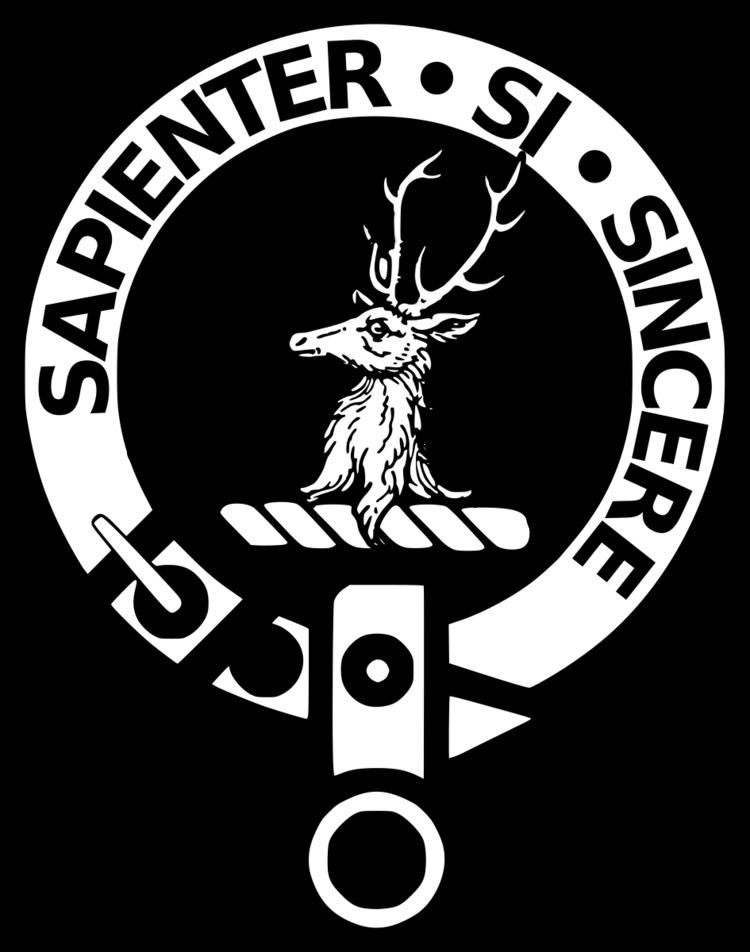 | ||
Motto "Sapienter si sincere", translated as "Wisely if sincerely" Plant badge Boxwood or Red Whortleberry Pipe music Failte Thighearna Thulaich ("Tulloch's Salute") | ||
Clan Davidson is a Highland Scottish clan and a member of the Chattan Confederation.
Contents
Origins
There are several versions of Clan Davidson's origins.
14th to 15th centuries
The Clan Davidson or Clan Dhai are recorded as being wiped out as a fighting force in 1370 at the Battle of Invernahavon, which was fought between the Chattan Confederation and the Clan Cameron. There was a dispute between the Davidsons and another clan of the Chattan Confederation, the Clan Macpherson, over who would command the right wing in the battle. The Mackintoshes, chiefs of the confederation supported the Davidsons and as a result the Macphersons left the field. The Clan Cameron took advantage of this situation and the Davidsons were virtually destroyed. However the Macphersons did eventually join the battle and the Camerons were defeated.
In 1396 the Battle of the North Inch took place, in which most evidence suggests was fought between the Clan Cameron and Clan Chattan, the latter whose forces included both the Davidsons and Macphersons. Although Lowland accounts suggest that it was fought between the rival Davidson and Macpherson clans. After the battle of the North Inch the chief of Clan Davidson is said to have moved north from where the Davidson of Cantray and Tulloch families appeared.
Sir Robert Davidson was a collector and distributor of royal dues in Aberdeen, known as an Alderman. He also led a contingent to fight at the Battle of Harlaw in 1411 where he was killed. Robert was a friend of Alexander Stewart, Earl of Mar, a son of Alexander Stewart, Earl of Buchan (the Wolf of Badenoch).
16th, 17th and 18th centuries
By the 16th century the name Davidson could be found from Ayr in the south to Aberdeen in the north. The first Davidsons recorded in Cromarty were Donald Davidson and Alexander Davidson who were living in the new town of Cromarty and who are listed as "in the council" in July 1670. Another Alexander Davidson who was known as Clerk Davidson was the town clerk of Fortrose. He married Elizabeth Bremmer, second daughter of a burgess of Fortrose in November 1689. From Alexander descended the Davidson Lairds of Tulloch Castle who became chiefs of the clan.
In the 18th century members of the Clan Chattan Confederation, including many Davidsons, were convicted of Jacobitism and transported to the North American colonies.
American Revolutionary War
Many of these Jacobite convicts upon gaining their freedom settled in the Piedmont Mountains of North Carolina and raised families, leading the English by the time of the American Revolution to declare the area a Hornet's Nest of rebels.
Notable amongst the many Davidsons fighting the American Revolutionary War was Brigadier General William Lee Davidson (1746–1781), a North Carolina militia general during the American Revolutionary War who was killed in action at the battle of Cowan's Ford.
Clan Seat and relics
Tulloch Castle became the seat of the chiefs of Clan Davidson in the 18th century and it was extensively restored by Robert Lorimer in 1922. The castle was later sold by the Davidsons but remains a focal point for Davidson traditions. A Davidson clan relic preserved by the local City Council is a suit of armour that is said to have been worn by the Davidson Provost of Aberdeen who was killed at the Battle of Harlaw in 1411. The Clan Davidson Association was formed (as the Clan Dhai Association) in 1909 and is still very active.
